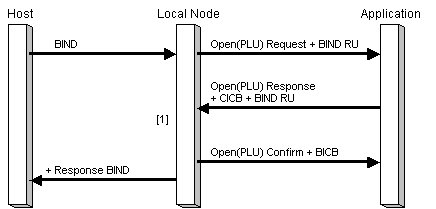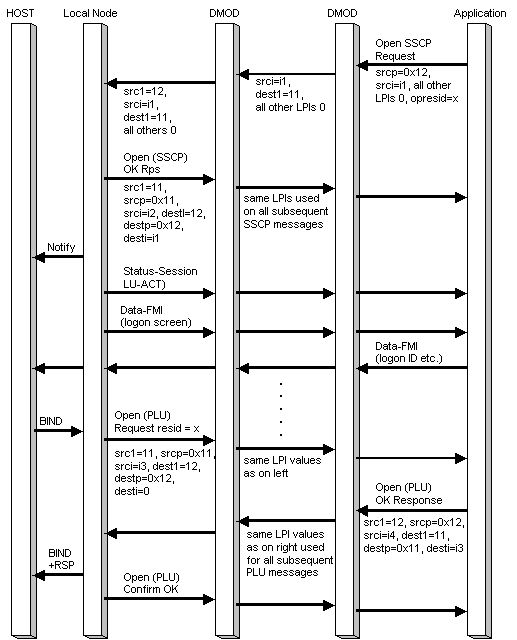
The opening of the PLU connection is closely associated with the establishment of the PLU session. The local node opens the PLU connection when it receives a BIND command from the host for an LU for which an application has previously opened an SSCP connection. Possible sequences are:
To successfully open the PLU connection, the local node sends an Open(PLU) Request to the application. The application responds with an Open(PLU) (OK) Response. Finally the local node sends an Open(PLU) (OK) Confirm to the application. This exchange of messages opens the PLU connection and establishes the PLU session. It should be noted that a successful PLU opening sequence is a "three-way handshake," in comparison to the opening of the SSCP connection, which is a "two-way handshake."
The Open(PLU) Request is delivered to the application using the SSCP connection for the LU. The Open(PLU) Request contains the application name and open resource identifier to allow applications to correlate the PLU and SSCP connections.
The Open(PLU) Request indicates the logical unit that the BIND request was directed to, references the resource identifier supplied in the Open(SSCP) Request for that LU, and carries the actual BIND RU received from the host (see Open(PLU)). It also carries the maximum RU sizes, chunk sizes (if appropriate), and pacing windows for the PLU session, to enable the application to determine the initial credit if it wishes to be involved in outbound pacing (see Pacing and Chunking).
The message flow for a successful opening of the PLU connection (on receipt of a nonnegotiable BIND) is shown in the following figure. Note that the BIND parameters are verified (at [1]) only when the application has supplied the BIND check table index as part of the CICB.

The following figure shows the message sequence for the initiation of both the SSCP and PLU sessions, including details of where the LPI values are assigned. (The application's source P value of 0x12 indicates that it is a 3270 emulator; see Open(SSCP) Request for more details of how the source LPI values are set.) The message flow shown assumes that the connection to the host is already established and that both the configuration and the BIND are valid.
After this message sequence, there are two valid sets of LPI values, one for the SSCP session and one for the PLU session. The application can access either session at any time until UNBIND and can use the LPI values to distinguish between received data on the two sessions.
